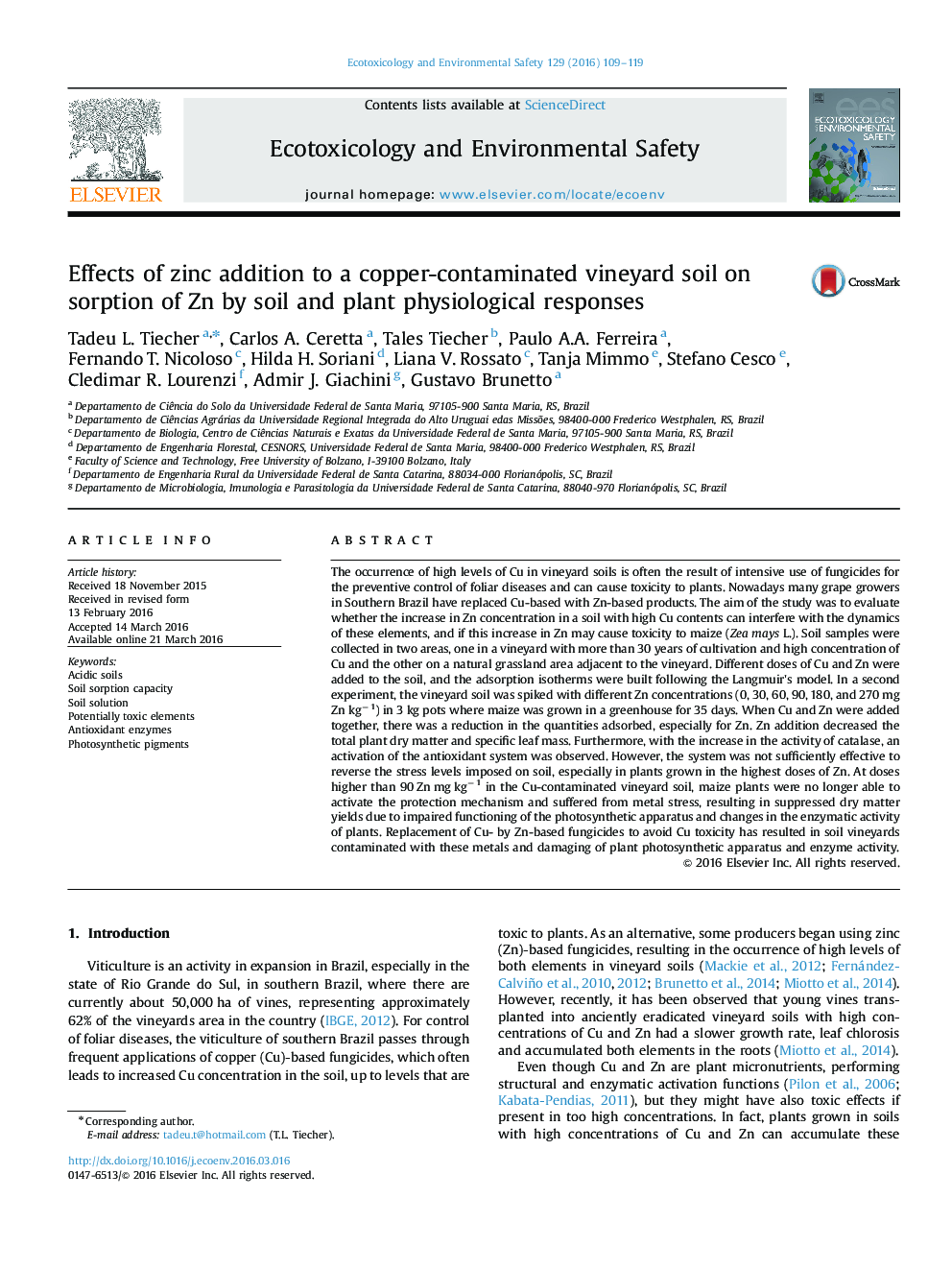| کد مقاله | کد نشریه | سال انتشار | مقاله انگلیسی | نسخه تمام متن |
|---|---|---|---|---|
| 4419262 | 1618934 | 2016 | 11 صفحه PDF | دانلود رایگان |

• Coupled addition of Cu and Zn results in lower soil adsorption, especially for Zn.
• The free ionic species Zn2+accounted for more than 70% in soil solution.
• Cu in soil solution was mainly bound to organic matter (>50%).
• Excess of Cu and Zn damages photosynthetic apparatus and the plant enzymatic activity.
The occurrence of high levels of Cu in vineyard soils is often the result of intensive use of fungicides for the preventive control of foliar diseases and can cause toxicity to plants. Nowadays many grape growers in Southern Brazil have replaced Cu-based with Zn-based products. The aim of the study was to evaluate whether the increase in Zn concentration in a soil with high Cu contents can interfere with the dynamics of these elements, and if this increase in Zn may cause toxicity to maize (Zea mays L.). Soil samples were collected in two areas, one in a vineyard with more than 30 years of cultivation and high concentration of Cu and the other on a natural grassland area adjacent to the vineyard. Different doses of Cu and Zn were added to the soil, and the adsorption isotherms were built following the Langmuir's model. In a second experiment, the vineyard soil was spiked with different Zn concentrations (0, 30, 60, 90, 180, and 270 mg Zn kg−1) in 3 kg pots where maize was grown in a greenhouse for 35 days. When Cu and Zn were added together, there was a reduction in the quantities adsorbed, especially for Zn. Zn addition decreased the total plant dry matter and specific leaf mass. Furthermore, with the increase in the activity of catalase, an activation of the antioxidant system was observed. However, the system was not sufficiently effective to reverse the stress levels imposed on soil, especially in plants grown in the highest doses of Zn. At doses higher than 90 Zn mg kg−1 in the Cu-contaminated vineyard soil, maize plants were no longer able to activate the protection mechanism and suffered from metal stress, resulting in suppressed dry matter yields due to impaired functioning of the photosynthetic apparatus and changes in the enzymatic activity of plants. Replacement of Cu- by Zn-based fungicides to avoid Cu toxicity has resulted in soil vineyards contaminated with these metals and damaging of plant photosynthetic apparatus and enzyme activity.
Figure optionsDownload as PowerPoint slide
Journal: Ecotoxicology and Environmental Safety - Volume 129, July 2016, Pages 109–119